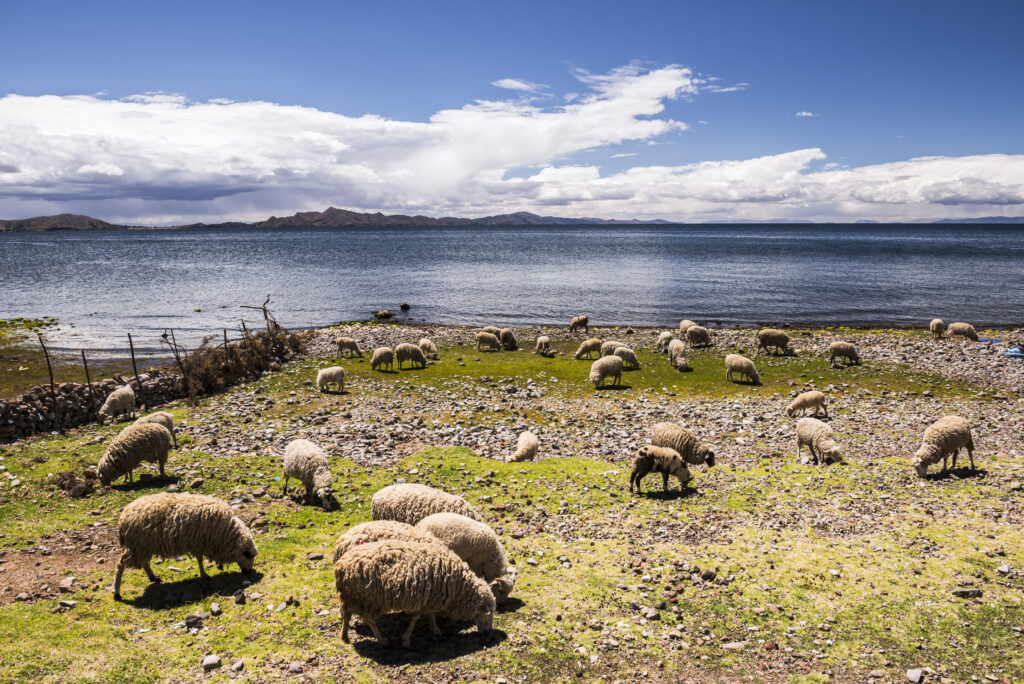For more than 15 years, Lake Titicaca, the highest navigable lake in the world, has been affected by recurrent periods of drought and evaporation due to intense radiation, causing a significant decrease in its volume. Currently, the lake is receding and has reached the lowest level in over 20 years, a situation that is raising great concern and alarm among authorities and residents in Peru and Bolivia.
According to the water level records of Lake Titicaca, monitored at its drainage through the Desaguadero River by ALT (Autonomous Binational Authority of Lake Titicaca), the level of this important body of water is only 0,10 m away from reaching the “critical” treshold (established at 3.807,75 meters above sea level).
If the current rate of decline goes on, this critical level would be reached in September, according to the ALT, partner of the Living Lakes Network in Peru and Bolivia.
The situation would mean that the ALT, with the consent of the countries (Peru-Bolivia), will have to operate the regulating gates of the Lake Titicaca hydraulic works, located on the Desaguadero River, in order to control to a certain extent the lowering of the level of Lake Titicaca.
This would help avoid the loss of more than 60,000 hectares of reed beds, a critical habitat for birds and aquatic fauna, which directly and indirectly benefit more than 700,000 Peruvian-Bolivian inhabitants of the lake basin.
Also of concern is the direct impact on nearly 6 million head of livestock (cattle, sheep and camelids) in the Lake Titicaca basin. The situation is causing great concern and alarm among authorities and residents in both countries.

The probable decision to operate the regulating gates is an extreme measure that would regulate the flow to the south of the TDPS (Titicaca – Desaguadero – Poopó – Salar de Coipasa endorheic system). In this area, the ALT has already documented and called for an alert in July due to the significant reduction in the flow of the Desaguadero River, which affects the southern terminal lakes (Poopó and Uru Uru) and the main irrigation districts in the Altiplano of the departments of La Paz and Oruro.
This would also have serious consequences for the ecosystems and for the more than 300,000 inhabitants settled along the Desaguadero River and the towns surrounding the Uru Uru and Poopó lakes.
In this context, Juan Ocola Salazar, president of the ALT, recommends that the urban population of the TDPS System make a rational use of water, avoiding losses. To the rural population, the ALT advises to rehabilitate or build new wells for groundwater extraction, with the support of the governments, to guarantee water for animal drinking and human consumption – as long as the water quality allows it.

The drought is compounded by the contamination of the waters of Lake Titicaca and its tributary rivers, a problem that may be exacerbated by the lack of water. ALT warns that the combination of these two factors could have even more dramatic consequences than expected. According to ALT, it will affect fishing, aquaculture and the availability of clean water in rivers: such is the case of the Coata, Ramis, Huancané rivers in Peru and the Katari, Pallina and Queka rivers in Bolivia, among others. The Peruvian and Bolivian governments are aware of this situation.
Fishing, an important source of income for thousands of Peruvian-Bolivian residents, has decreased 90% in the last 30 years in Lake Titicaca. About 20 native species of the genus Orestias have become extinct. Currently, only six species of the genus Orestias and two of Trichomycterus are left. This problem is being addressed at the binational level as part of the Living Lakes Biodiversity and Climate Project, developed by the ALT in Peru in Bolivia.
Lake Titicaca, Threatened Lake of the Year 2023
In 2023, Titicaca was declared “Threatened Lake of the Year” by the Global Nature Fund and the Living Lakes Network. This is the second time that Titicaca has received this worrying recognition in just 11 years, a sign of the serious situation that this natural treasure, vital for the well-being of millions of Peruvians and Bolivians, is going through. In December 2022, delegates from around the world gathered on its shores for the 16th Living Lakes Conference, and learned first-hand about some of the lake’s daunting environmental problems.


